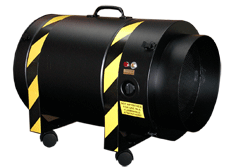By JOHN MORENO GONZALES, Associated Press Writer Tue May 27, 6:21 PM ET
BAY ST. LOUIS, MISS. - The anguish of Hurricane Katrina should have ended for Gina Bouffanie and her daughter when they left their FEMA trailer. But with each hospital visit and each labored breath her child takes, the young mother fears it has just begun.
"It's just the sickness. I can't get rid of it. It just keeps coming back," said Bouffanie, 27, who was pregnant with her now 15-month-old daughter, Lexi, while living in the trailer. "I'm just like, `Oh God, I wish like this would stop.' If I had known it would get her sick, I wouldn't have stayed in the trailer for so long."
The girl, diagnosed with severe asthma, must inhale medicine from a breathing device.
Doctors cannot conclusively link her asthma to the trailer. But they fear she is among tens of thousands of youngsters who may face lifelong health problems because the temporary housing supplied by the Federal Emergency Management Agency contained formaldehyde fumes up to five times the safe level.
The chemical, used in interior glue, was detected in many of the 143,000 trailers sent to the Gulf Coast in 2006. But a push to get residents out of them, spearheaded by FEMA and the Centers for Disease Control and Prevention, did not begin until this past February.
Members of Congress and CDC insiders say the agencies' delay in recognizing the danger is being compounded by studies that will be virtually useless and the lack of a plan to treat children as they grow.
"It's tragic that when people most need the protection, they are actually going from one disaster to a health disaster that might be considered worse," said Christopher De Rosa, assistant director for toxicology and risk assessment at the federal Agency for Toxic Substances and Disease Registry, an arm of the CDC. "Given the longer-term implications of exposure that went on for a significant period of time, people should be followed through time for possible effects."
Formaldehyde is classified as a probable carcinogen, or cancer-causing substance, by the Environmental Protection Agency. There is no way to measure formaldelhyde in the bloodstream. Respiratory problems are an early sign of exposure.
Young children are at particular risk. Thousands who lived in trailers will be in the prime of life in the 10 to 15 years doctors believe it takes cancer to develop.
FEMA and CDC reports so far have drawn criticism.
A CDC study released May 8 examined records of 144 Mississippi children, some of whom lived in trailers and others who did not. But the study was confined to children who had at least one doctor's visit for respiratory illness before Katrina. It was largely inconclusive, finding children who went to doctors before the August 2005 storm were still visiting them two years after.
A bigger, five-year CDC study will include up to 5,000 children in Louisiana, Mississippi, Alabama and Texas, and CDC officials said it should begin next year. But members of Congress point to the decade or longer it could take for cancer to develop and say a five-year look is inadequate.
"Monitoring the health of a few thousand children over the course of a few years is a step in the right direction, but we need commitment," said Rep. Bennie Thompson, D-Miss.
Thompson has introduced legislation to force FEMA and CDC to provide health exams for trailer residents who believe formaldehyde made them ill. The bill is similar to $108 million legislation for workers who labored at the World Trade Center site.
Arch Carson, professor of occupational medicine at the University of Texas Health Science Center in Houston, said preliminary exams alone for trailer residents could cost more than the trade center bill. But he said class-action lawsuits over the formaldehyde — at least one has been filed — could be even more expensive, costing many billions of dollars.
"It would be best for the government to get its act together now," Carson said.
More than 22,000 FEMA trailers and mobile homes are still being used in Mississippi and Louisiana.
FEMA and the CDC say they will create a registry of those who stayed in trailers for possible future study. But they admit that the task of keeping track of everyone is made difficult by the rush to get families into other housing.
The parents of McKenzie Whitney, a 1-year-old girl with wavy auburn hair, are running low on money and options for caring for the sick girl.
Born into a FEMA trailer, McKenzie was out of the dwelling in August 2007 after a 10-month stay. Her mother, Kacey Whitney, 22, a housekeeper, and her father, Kevin Whitney, 30, a maintenance man, juggle the pressures of post-hurricane life with tending to the child.
"Sunday night when I was going to work, as I was walking up to the front door, she just threw up. She had a fever. We went to the hospital and they wound up keeping her overnight," the girl's mother said. "She's always had a cold, always."
Like Lexi, McKenzie is treated with a nebulizer, a boxy breathing machine that turns medication into mist. It is prescribed to patients with moderate to severe symptoms, and requires children to inhale for 20 minutes.
Dr. Shama Shakir, a Bay St. Louis pediatrician who treats Lexi and Kacey at the Coastal Family Health Center, said that before the storm she prescribed nebulizers about twice weekly. Lately, she is doing so up to 12 times a week.
"You give them the most potent steroids, the most potent antibiotics, and still they have the symptoms," Shakir said. "I worry about what will become of these children long-term."
Deven Galloway, 27, lived in a FEMA trailer in Bay St. Louis for seven months with 4-year-old son DeReion. The boy uses a nebulizer for asthma.
"One day he was like, `I'm going to take more so I can go ahead and be finished for a long time,'" said his mother. "I had to tell him it didn't work that way."




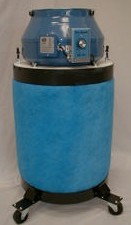
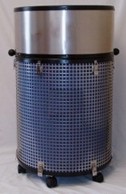



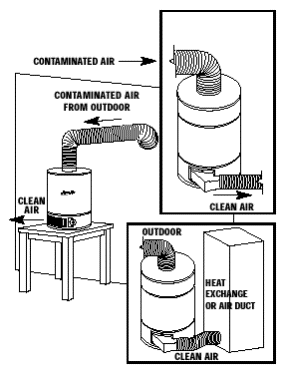

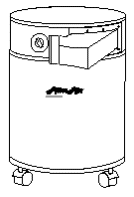
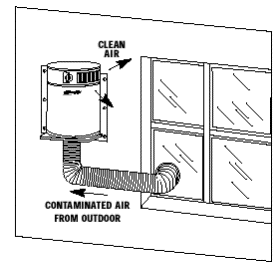 Negative Pressure
Negative Pressure





